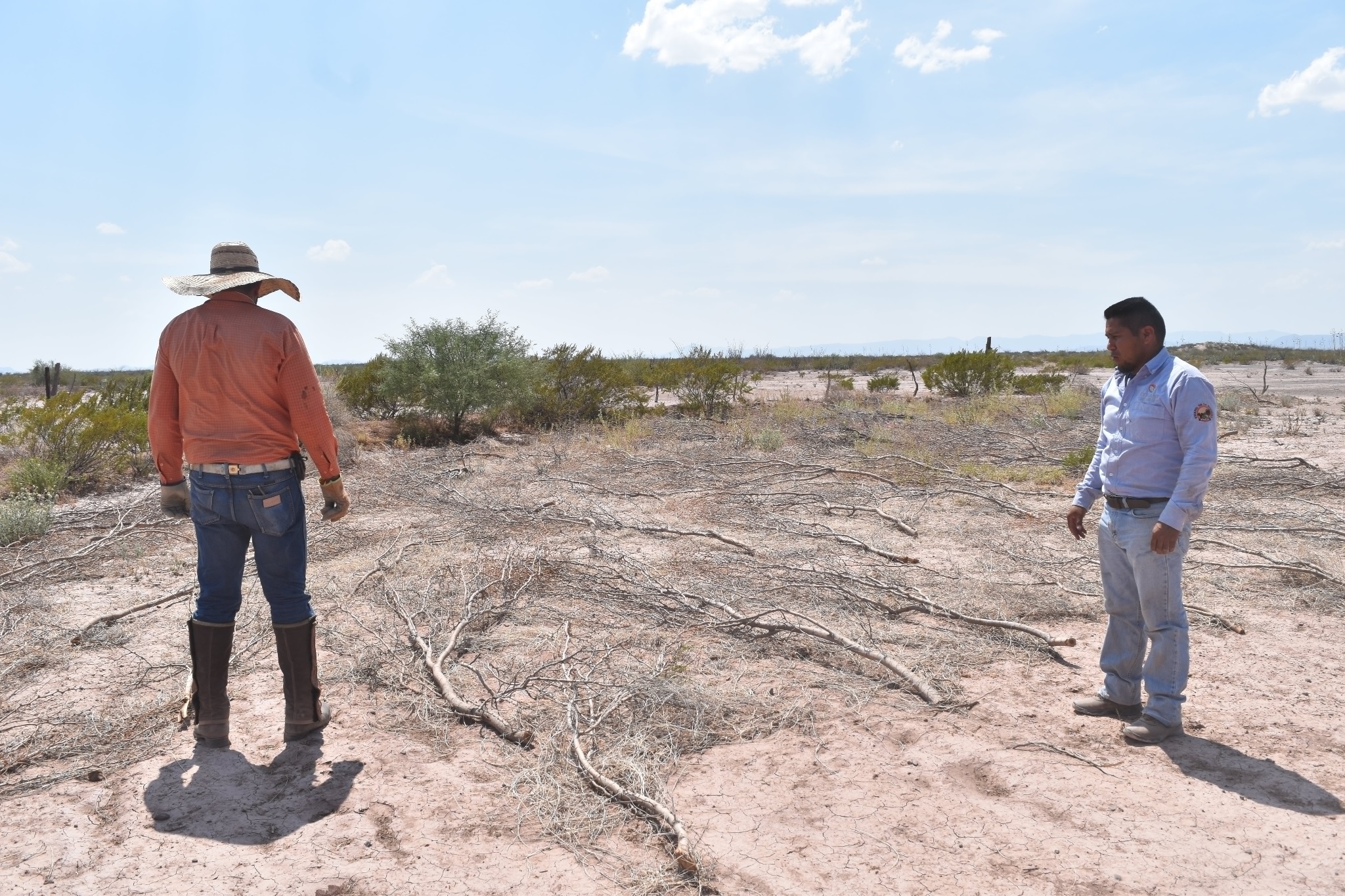I. Create a sense of belonging to local ecosystems.
Semi-circular border with padding inside, which retains humidity and lowers the soil temperature.
David Borré González - Pronatura Noreste, A.C.
Training for inhabitants of the Mapimí BR in monitoring grassland birds, explaining the importance of grassland birds for their pastures.
David Borré González - Pronatura Noreste, A.C.
Invocation of landowners in the monitoring of biological indicators.
Acervo fotográfico Pronatura Noreste, A.C.
Leaders of communities of the Mapimí and La Carbonera BR, after an exchange of experiences.
Acervo fotográfico Pronatura Noreste, A.C.
Work team of technicians from Pronatura Noreste and CONANP.
Acervo fotográfico Pronatura Noreste, A.C.
Without the involvement of the people, it is not possible to implement ecosystem conservation schemes at different scales. Therefore, it is important to raise awareness and work with local communities, in this case for the conservation of grasslands, through a local environmental education program that addresses the problems detected.
Identity can be developed by increasing people's awareness of the benefits of sustainable management in maintaining local livelihoods and people's quality of life, but it can also be further strengthened by encouraging the self-organized commitment of all members of the community, not only to make use of the different parts of the ecosystem to sustain livelihoods, but also to participate in its rehabilitation.
- Openness and willingness of the community to internalize lessons learned.
- Development of environmental education programs on the Bolson Turtle and the grassland aimed at the local population.
- Linkage between managers, inhabitants, users and landowners of the Mapimí BR to work together and foster a sense of belonging and identity.
- Recognition of the benefits derived from sustainable rangeland management.
- Motivation and strengthening of community capacities to participate in ecosystem restoration.
- The development of a link with the community and its awareness contributes to increase efforts for a transformation of attitudes and practices for ecosystem management and adaptation to climate change.
- Involving the community in ecosystem rehabilitation increases their commitment to sustainable management.
